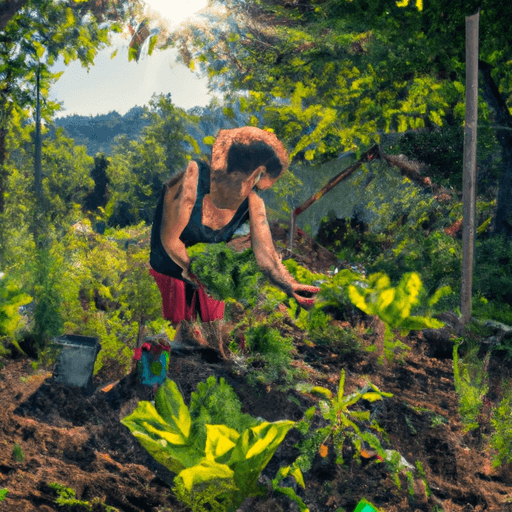Growing Your Own Vegetables: A Guide for Beginners
Growing your own vegetables can be a rewarding and cost-efficient way to get access to nutritious and delicious produce. Not only can it be a fun and creative way to spend your time, but it can also be beneficial for the environment and your own health. In this article, we’ll discuss the benefits of growing your own vegetables, the types of vegetables you can grow, the tools and resources needed, and how to maximize yields. By the end of this article, you’ll have all the information you need to get started growing your own vegetables.
The Benefits of Growing Your Own Vegetables
Growing your own vegetables can have many benefits, both for you and the environment. Here are some of the top benefits of growing your own vegetables:
- It’s eco-friendly: Growing your own vegetables reduces the amount of energy and resources used in transport and packaging, and also helps reduce the amount of carbon dioxide released into the atmosphere.
- It’s healthier: Growing your own vegetables means that you know exactly what goes into your food, so you can avoid unhealthy additives and chemicals. It also means that you’ll have access to fresher produce than store-bought.
- It’s cost-efficient: Growing your own vegetables can end up being much cheaper than buying them from the store in the long run, especially if you’re growing in bulk or using the same vegetables in multiple recipes.
- It’s rewarding: Growing your own vegetables can be a satisfying and enjoyable hobby. You’ll be able to watch your plants grow and enjoy the fruits of your labor.
Types of Vegetables You Can Grow
There are many different types of vegetables that you can grow in your own garden. Some of the most common types of vegetables include:
- Tomatoes
- Peppers
- Carrots
- Onions
- Cucumbers
- Beans
- Eggplants
- Zucchini
- Lettuce
- Potatoes
The list goes on and on, so you’ll be able to find a type of vegetable that works for your garden. Consider the climate and soil of your area when selecting which types of vegetables to grow.
Tools and Resources Needed
Growing your own vegetables requires some basic tools and resources. Here are some of the most important things to consider:
- Soil: Make sure you have high-quality soil with good drainage and organic matter.
- Water: Plants need consistent access to water, so consider the watering system you’ll need.
- Seeds: Buy vegetable seeds from your local garden center or online.
- Tools: You’ll need some basic tools for planting and harvesting, such as a trowel, hoe, and rake.
- Fertilizer: Organic fertilizer is best for your vegetables.
- Support: Stakes, cages, and trellises are great for providing support to your plants.
Maximizing Yields
Maximizing yields in your vegetable garden requires some planning and effort. Here are some tips to help you get the most out of your vegetable garden:
- Rotate your crops: Planting the same vegetables in the same area every year can deplete the soil, so rotate your crops to keep the soil healthy.
- Compost: Composting is an easy way to enrich the soil with nutrients, so make sure to add compost to your soil in the spring.
- Space plants properly: Make sure to provide enough space between plants so they can get the sunlight and air they need to thrive.
- Water consistently: Water your plants in the morning, when the soil is still cool and not yet drying out from the sun.
- Choose the right varieties: Choose varieties that are best suited for your climate and soil conditions.
Conclusion
Growing your own vegetables can be a rewarding and cost-efficient way to get access to nutritious and delicious produce. Not only will you be able to enjoy the fruits of your labor, but you’ll also be helping the environment and your own health. With the right tools and resources, you can start growing your own vegetables in no time. By following the tips and tricks outlined in this article, you’ll be sure to get the most out of your vegetable garden.


















Comments
Leave a Comment